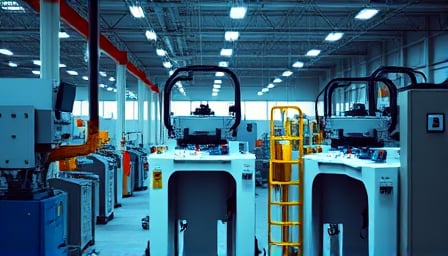Corporate Analysis: Avery Dennison Corp’s Resurgence – A Calculated Gamble or Strategic Masterstroke?
Avery Dennison Corp, the U.S. titan that turns adhesive sheets into the invisible glue of modern commerce, is riding a modest rally that has caught the eye of every market watcher. Its shares, which have climbed to a new 52‑week zenith, are a barometer of the company’s underlying vigor and the broader market’s appetite for industrial resilience.
Financial Fortitude – Not Just Numbers on a Sheet
The firm’s balance sheet is a textbook case of diversification paying dividends. While its core pressure‑sensitive offerings—adhesives used in labeling, decorative finishes, and specialty applications—continue to enjoy a steady surge, the company’s non‑pressure segment has eclipsed expectations. Tickets, tags, RFID inlays, and ancillary services have recorded a growth spike that outpaces the industry average, signaling that the company’s strategic pivot toward high‑margin, technology‑driven products is not a fleeting gimmick.
Why this matters: In an age where commodity pricing wars can erode margins overnight, Avery’s ability to command premium pricing for RFID and electronic materials demonstrates a robust competitive moat. Investors who previously deemed the sector too volatile are now re‑evaluating the company as a bellwether for industrial innovation.
Expansion via Equity – A Double‑Edged Sword
Avery’s recent decision to issue fresh equity to bankroll its label and electronic materials production capacity is a bold, if not audacious, bet. On one side, the capital infusion is projected to lift the firm’s operational scale, reduce unit costs, and cement its share of the fast‑growing RFID market. On the other, diluting shareholders’ stakes in the short term could have tempered enthusiasm.
The market’s muted reaction—yet a steady price uptick—suggests confidence that the expansion will pay off. Analysts argue that the company’s historical return on invested capital (ROIC) of 15%+ makes the dilution an acceptable price for future growth. In a world where investors demand immediate returns, Avery’s willingness to forego short‑term gains for long‑term supremacy is, frankly, a rare and commendable trait.
Market Sentiment – A Mirror of Confidence
The recent spike in stock price cannot be divorced from the overall market environment. However, the company’s trajectory aligns with the narrative that “industrial strength” is back in vogue. The rally reflects not only macro‑economic stimuli but also Avery’s own performance: quarterly earnings beats, a healthier cash conversion cycle, and a pipeline that promises higher EBITDA margins.
Critics might argue that the rally is a product of market hysteria, but the data paints a different picture. The company’s fundamentals—revenue growth, margin expansion, and a robust capital allocation strategy—offer tangible evidence of its intrinsic value. If anything, the rally is a testament to the market’s willingness to reward companies that combine steady core earnings with strategic foresight.
Looking Ahead – The Road to Market Dominance
With increased production capacity, Avery Dennison is poised to seize a larger slice of the RFID and electronic materials market, sectors that are expected to double in size over the next decade. The firm’s expansion strategy is not merely a defensive move; it’s an aggressive push to become the de facto standard for high‑tech labeling solutions worldwide.
Investors must weigh this ambition against the risks of overextension and market volatility. Yet, the company’s disciplined approach to capital deployment, coupled with its proven track record of turning new technology into profitable business lines, suggests a strong likelihood of success.
Bottom line: Avery Dennison’s recent rally is more than a market correction—it’s a clear signal that the company’s strategic vision is resonating. The firm is not merely adapting; it is setting new industry benchmarks. For investors looking for a blend of stability and high‑growth potential, Avery Dennison Corp offers a compelling case study of calculated risk and disciplined execution.
